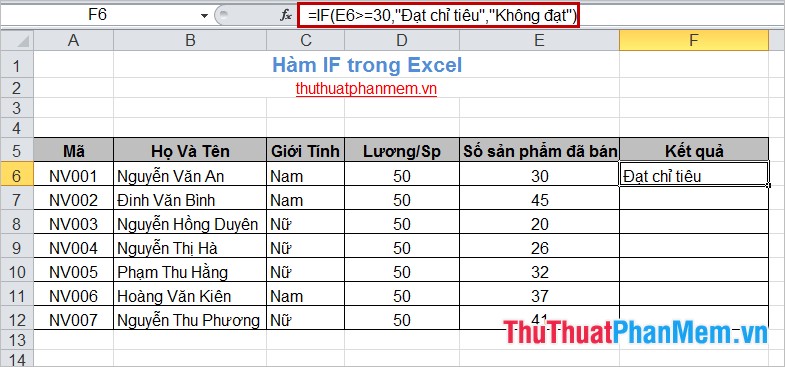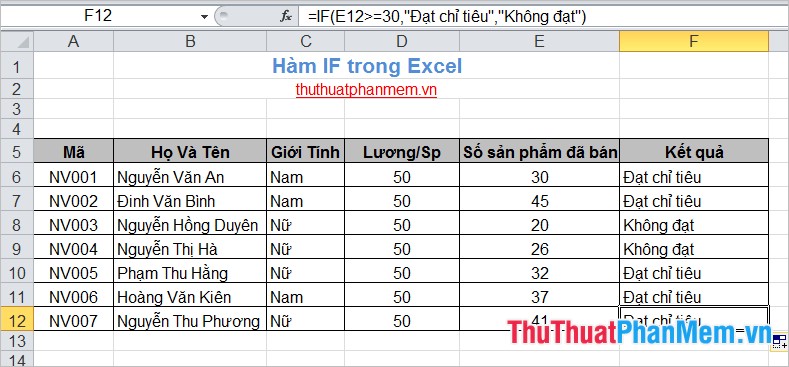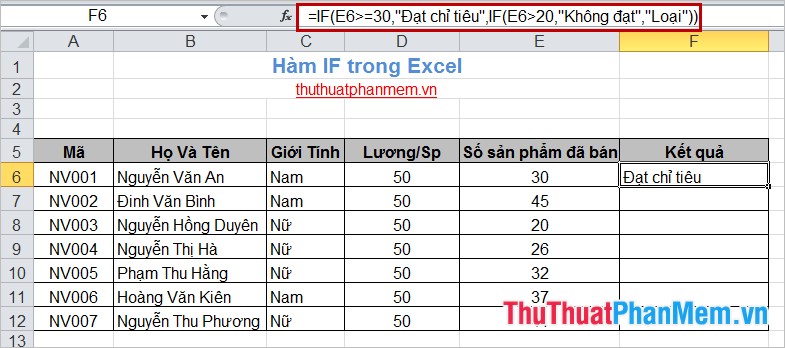IF function in Excel
IF function is a common function in Excel, for those who often work with Excel spreadsheets, almost everyone knows the IF function. But for those of you who are new to Excel, you may know the IF function but not the function.

The following article describes the syntax and usage of the IF function in Excel, you follow along.
Description
The If function returns the value if the condition is evaluated as TRUE and will return another value if the condition is evaluated as FALSE.
Syntax
IF (logical_test, [value_if_true], [value_if_false])
Inside:
- logical_test: an expression that can be TRUE or FALSE.
- value_if_true: the value you want to return if the logical_test argument value is TRUE.
- value_if_false: the value you want to return if the logical_test argument evaluates to FALSE.
You can nest if functions as value_if_true or value_if_false with complex requests.
For example
Example 1: Using an IF function
Give the data table as follows:

Requirement: If the number of products sold> = 30, the result "Satisfactory" will be returned, if the number of products sold
You check the conditions for the first employee to apply the formula:
= IF (E6> = 30, "Pass target", "Not met")
E6 is the number of products sold by the first employee, if the number of products sold> = 30, the result will be "Pass the target", the opposite result is "Not reached".
The following results:

You do the same with the other employees, but cell E6 is replaced respectively E7 of the second employee, E8 of the third employee .

Example 2: Using nested IF functions
For the data table as in example 1:

Requirements: If the number of products sold> = 30, the result is Satisfactory, and if the number of products sold> 20, the result is Failed, otherwise the result is Type.
Apply the formula to the first employee:
= IF (E6> = 30, "Pass quota", IF (E6 <= 20, "Type", "Not met")
The following results:

Do the same, the staff below will replace E6 with E7, E8 . and you will get the results of all other employees.

Thus, the article introduces you to the IF function syntax and specific examples of how to use the IF function. Hopefully, with the 2 examples above, you can grasp how to use the IF function in Excel. Good luck!
 Split data in columns in Excel
Split data in columns in Excel Write italic, vertical, and diagonal lines in Excel
Write italic, vertical, and diagonal lines in Excel The function of dividing remainder and dividing by integer (MOD and QUOTIENT) in Excel
The function of dividing remainder and dividing by integer (MOD and QUOTIENT) in Excel Power function (exponential) in Excel
Power function (exponential) in Excel The Text function converts a numeric value into text in Excel
The Text function converts a numeric value into text in Excel Average function (calculate the average) in Excel
Average function (calculate the average) in Excel